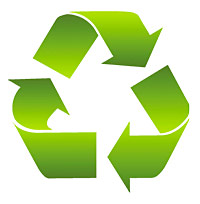EU Parliament to debate new legally-binding measures on recycling

THE European Commission issued proposals on 2 July to increase recycling and phase out landfilling, including a series of legally-binding measures aimed at nudging the EU towards a lean “circular economy”. In other words, one that produces virtually no waste, with raw materials being re-used and recycled continually within a closed loop.
The package contains a wide-ranging list of legally binding targets, including a 70% recycling target for municipal waste by 2030; an 80% recycling target for packaging, such as glass, paper, metal and plastic by 2030; and a ban on landfilling of all recyclable and biodegradable waste by 2025.
The document also lists a series of “aspirational” goals, which are not legally enforceable. These include a phasing-out of landfilling of all recoverable waste by 2030 and a 30% reduction of waste by 2025.
In the new measures, the Commission has also proposed to use resource productivity – or gross domestic product (GDP) relative to raw material consumption – as its official indicator of resource efficiency.
The package is now being forwarded to the European Parliament and EU member states for adoption. So far BusinessEurope, the EU employers’ organisation, has rejected the idea of targets,. “The use of resources should not be penalised,” a spokesperson said, rejecting the proposed resource productivity indicator. The UK government has also rejected the notion that Europe should set targets for its member states.
Arguments expected from the Commission include the possibility of creating 580,000 new jobs in environmentally friendly businesses across the EU while reducing demand for costly and scarce resources.
The Confederation of Paper Industries (CPI) has said it welcomes, in principle, a more challenging approach to tackling the unnecessary disposal of genuinely renewable resources, such as paper and card, via landfill or incineration. However, it listed a number of initial concerns. These include the continued ambiguity around the proposed definition of recycling; and the need for a greater focus on ‘high-quality recycling’.
“The CPI is not opposed, in principle, to moving to an output-based recycling calculation method, to account for the present gap between collection rates and genuine recycling rates. However, new methods of recycling calculation methodology should not be introduced in the absence of adequate testing against overall current and projected recycling performance.”
Regarding the packaging propsals, the CPI said: “With a current recycling rate of over 80%, paper and board is the most recycled packaging material in the EU, but a 90% recovery rate may be disproportionately challenging.”













